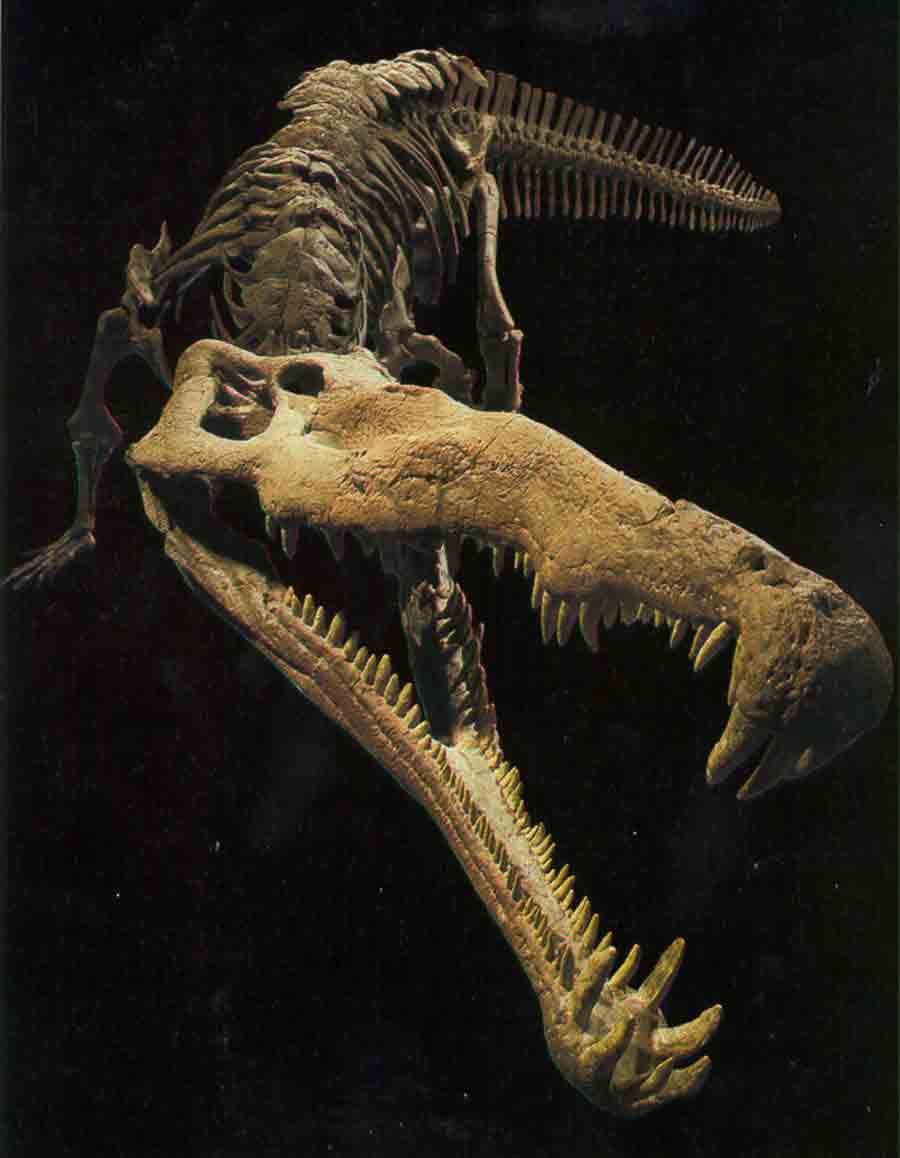 |
 |
 |
 |
 |
Produced
by the Population Genetics and Evolution class, Furman University |
||||
 |
 |
 |
 |
 |
Produced
by the Population Genetics and Evolution class, Furman University |
||||
 |
The
Triassic: Phytosaurs |
 |
||
| Phytosaurs
were aquatic lizards that had long snouts, many sharp teeth, short legs,
and a long tail. Their name, which means plant lizard, is quite misleading
because they were carnivorous! Besides having nostrils close to their
eyes, they resembled crocodiles. For this reason, some call them “Parasuchia”
which means 'alongside crocodiles'. They grew to abouth 5 meters long.
They are classified as thecodonts, which are extinct primitive archosaurs
that had teeth in sockets and were probably ancestors of dinosaurs (Meinhardt
2007). Phytosaurs were egg-laying and dug holes in the ground for nests.
One of the oldest known fossil reptile nests was quite possibly a Phytosaur
because they are hole-nesting reptiles and because Phytosaur tracks were
found near the nest. Trampled ground around the nest suggests that the
Phytosaur might have remained at the nest to protect the eggs (Hasiotis
and Scott 1998). Phytosaurs are divided into two subfamilies, Mystriosuchinae
and Angistorhininae. Angistorhininae had a heavier build and a wider,
deeper jaw filled with serrated teeth and conically shaped crushing teeth
further back in the jaw. They probably fed on large animals, including
other reptiles. Mystriosuchinae had long, slender jaws that were filled
with conically shaped teeth and tipped with hook-shaped fangs. They most
likely fed on fish (Meinhardt 2007). Phytosaurs and other archosaurs lacked
a vomeronasal system and so lacked the pheromone-processing system common
in most tetrapods. Instead, they most likely communicated through visual,
acoustic, or tactile cues (Senter 2002).
Page by Laura Snyder |
 |
| Phytosaur. Picture from: The National Park Service | |
|
Meinhardt J. 2007. Phytosaur. Cochise College. Accessed on March 25, 2010. Hasiotis S, Scott J. 1998. World's oldest known fossil reptile nests discovered in Arizona's petrified forest. Accessed on March 25, 2010. Senter P. 2002. Lack of a pheromonal sense in phytosaurs and other archosaurs, and its implications for reproductive communication. Paleobiology: 28:544-550. |